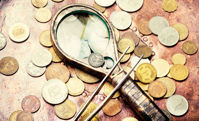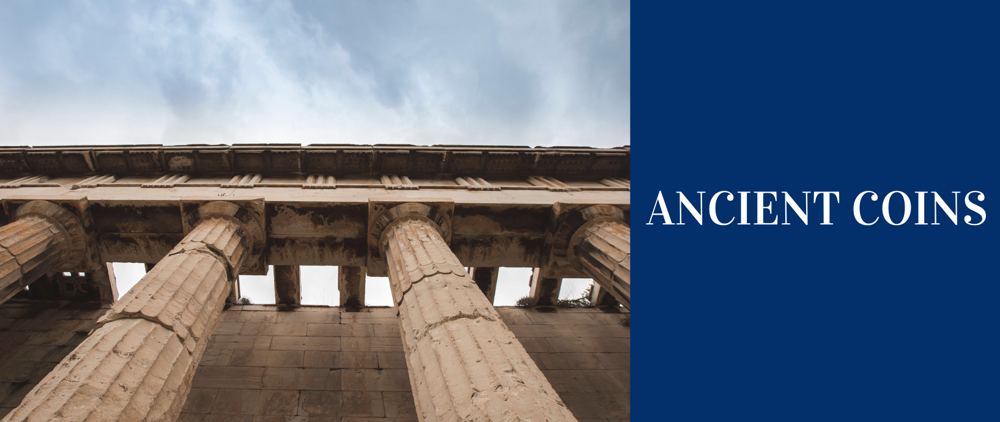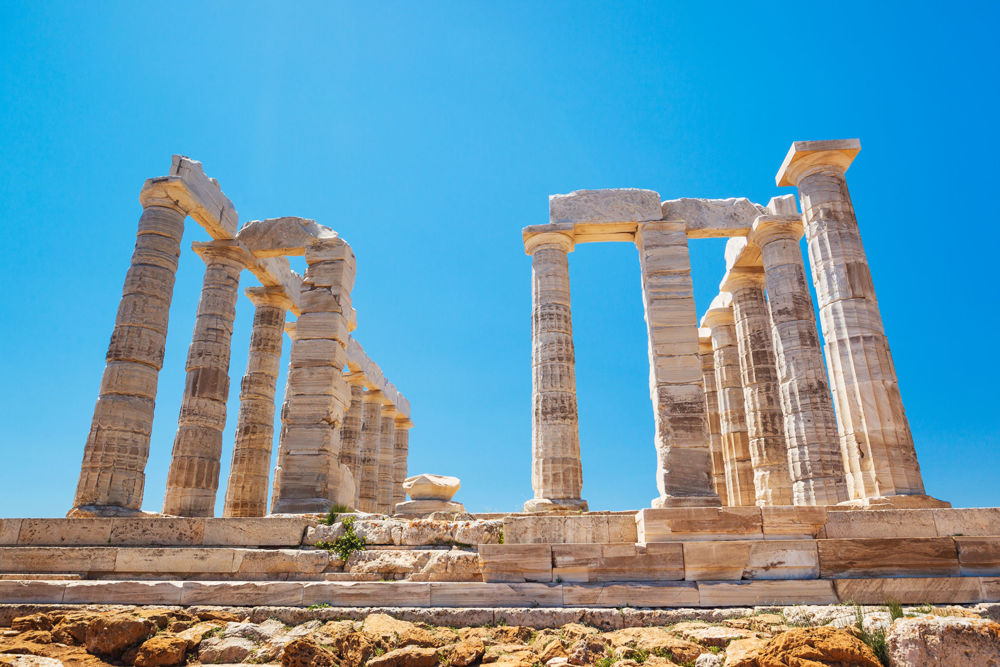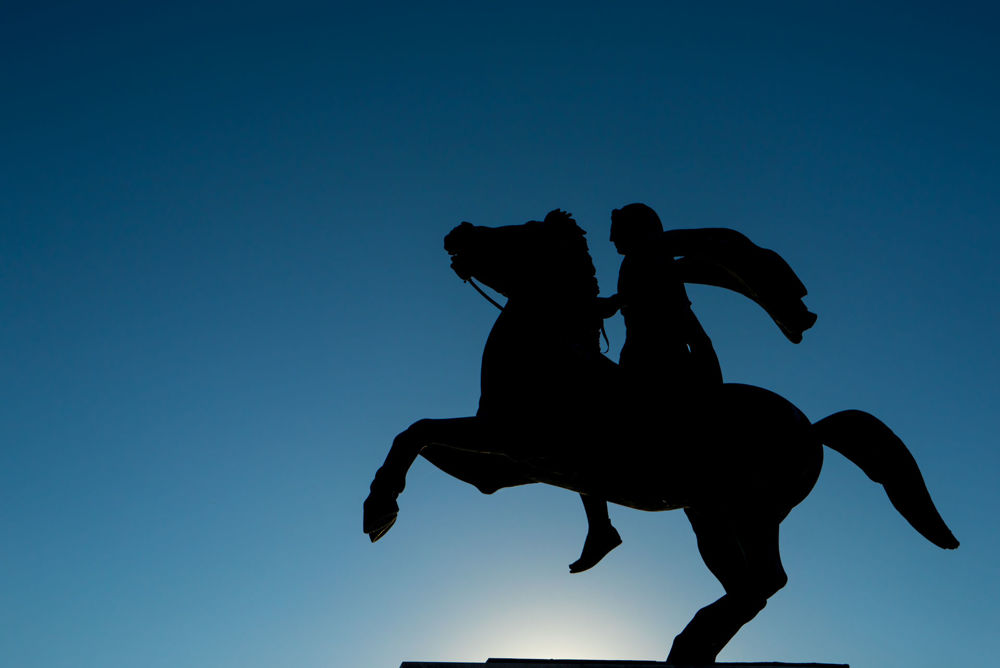Posted on April 14, 2021


You may not realize it, but today’s coins are based on ancient coins that date back from the 6th century BCE up through the European Renaissance over two thousand years later. Coinage has gone through millennia of usage and innovation. For many collectors, especially those interested in numismatics, ancient coins are the prized possessions of their collections.
Here is a look at the history of ancient coins and some of the most notable coins throughout history.
There is still a debate about what coinage is the oldest known to man, but the coin most often cited as being the earliest on record is the Lydia Lion, dating back to 610 BCE. Around the same time as the Lion, coins in India were also being used.
It has been assumed that these early Indian coins, called Karshapanas, were used by businessmen in trade before the state even accepted them. As there was no central mint at the time, these coins were valued based only on trust, or the integrity of the individual evaluating them. They were created by cutting a silver bar into pieces of the correct weight, then marked with symbols by the low-tech means of taking a die and hammering it onto the coin. The resulting Karshapanas were reasonably consistent in weight but weren’t consistently shaped.
Each Karshapana was stamped with a symbol from one to six to denote its “face value.” Yet, unlike most coins, Karshapanas were not circular, making them all the more unique. These early coins can be found in ancient Buddhist and Persian texts of the time.
These first-known coins were not widely accepted among governments and trading across borders. It wasn’t until the Greeks came along that coinage became an essential part of global commerce.
Ancient coin minting bears some resemblance to the minting process still used to this day. However, in the early days of minting, instead of machinery, coins were minted with the help of skilled artists who manufactured coin dies by hand. These laborers engraved coin dies using small steel tools or drilling with an abrasive substance like corundum which were then used to mass-produce coinage. It’s estimated that dies used on ancient coins lasted for up to 10,000 strikes.
As time passed, minting techniques improved, allowing for mass production of coins. Early coin makers created molds of coin designs to stamp the coins efficiently. Coin molds then gave way to even faster minting processes. By 323 BCE, the process shifted to molten alloy poured into open molds for even more efficient coin production.

Lasting from 800 BCE - 480 BCE, the Archaic Period in Greece was filled with advances in politics, economics, and culture. This was also the time period when coinage like the previously mentioned Karshapanas were invented in the East. At first, coins were only used locally to facilitate trade. But it wasn’t long before Archaic Period coinage spread throughout the Greek Empire, ushering in a new era of commerce in the region.
A coin that is most often cited as the earliest in history is the Lydian Lion, minted by King Alyettes of Lydia (current-day Turkey) as early as 610 BCE. The coin itself might not seem like anything special, but it was a vital innovation made of electrum, a naturally occurring alloy of gold and silver. Electrum was commonly found in riverbeds and around creeks, and the Greeks actually called it gold due to its color and the high concentration of gold in the metal itself. Because it was a naturally occurring alloy that could be easily excavated, it made for the perfect metal to use for minting.
Just don’t expect to get your hands on a Lydia Lion anytime soon. These coins are extremely valuable and mostly kept under lock and key at the places like the British Museum for historical preservation.
Following the Lydians, the tribe of Ionia saw the value of producing coins of their own to facilitate commerce. The Ionians followed in their predecessors’ footsteps, creating coinage out of electrum and likely copying the Lydians’ production process themselves.
While the thirteen cities of Ionia were independent of one another, they all were unified for religious purposes. Trade between the cities was common, and Ionian coins helped in this regard. By adding stamps to each coin, the Ionians could ensure standardized values across their coinage.. Ionian coins were stamped with varying imagery but most often included pictures of bees or the stag, which were symbolic of ancient deities.
An era of war and conflict, the Greek Classic Period saw the need for the Greek’s to band together in defense against the Persians. This banding together also created an environment of trade and commerce between the allies, requiring commonly accepted currencies. At the time, many city-states began minting their own coins. While there are too many to name, here are a few notable coins created during the Classic Period.
After defeating the Persian army in 469 BCE, Athens became the major city of its time. What emerged from this victory was a military and economic power unlike any that had come before it. And with such power came the need to grow its wealth throughout the world.
The Athenian Owl was a response to Athens’s growing wealth, and its wealth showed with this coin as it was one of the largest silver coins of its time. With an image of the goddess Athena on one side and the image of an owl — her patron animal — on the other, these coins were easily recognizable no matter where they were found and remain just as recognizable today. When the Peloponnesian War began almost four decades later, the Athenians used these coins to fund their battles.
In 2018, a hoard of 30,000 tetradrachms reportedly found in Turkey flooded the market, which resulted in falling prices for collectors.
Because the Aeginians regularly traded with their counterparts in Lydia and Ionia, they needed a coin of their own. And when coming up with an image for their coinage, it only made sense that the Island-based Aeginians opted for a turtle to represent their new currency. These coins were based on older designs from the Archaic Period along with the previously mentioned Athenian Owl. Initially, the turtle was depicted as sea-based, but the design changed over time to display a land-based turtle in later years.
As a result of financial hoarding during the time, these coins can still be found in collections today. In fact, one of the earliest Aegina Turtle Silver Stater coins, dated at around 550 BCE, is currently being held at the Bibliothèque Nationale in Paris.
Unlike the often simplistic stylings that came before it, the Corinth Stater was one of the first coins to use detailed imagery by master artists. Similar to the Athenian Owl Tetradrachm, the goddess Athena is depicted on one side of the coin, this time in a more feminine and detailed manner, while the flipside displays a Pegasus, complete with wings shown in a flying motion.
The Stater grew in its acceptance as a form of currency with the spread of the Corinth military and political influence throughout the region.. These coins were widespread in the Classic Era but could actually be seen in all of the Ancient Greek eras due to their prevalence, circulating as late as 50 CE.
Staters were minted in both gold and silver. One gold stater remains one of the largest known ancient gold coins ever minted. It weighs 5.97 ounces and measures 2.3 inches in diameter.
Following Alexander the Great’s death in 323 BCE, the Greek Empire was left with no clear leader and direction. The vast empire was divided up into new kingdoms with independent governments. Ultimately, this was the beginning of the Greeks’ end, as the Roman Empire was just emerging as the new world power. But for the time being, the Greeks still controlled most of the region’s commerce and were continuing to mint coins accordingly.

After his conquest in Babylon, Alexander the Great used the bullion he seized from his enemies to create a new coin using the Greek gods as inspiration. Minted from 336 BCE - 323 BCE, the most prominent of these coins featured the king of gods, Zeus, on one side and Herakles on the other.
The decadrachm was standardized to be used across Alexander’s vast empire, making them the most widespread currency used at the time. And even though these were initially minted before the Hellenistic Period began, the decadrachm lasted so long that they remained the most used coins well after Alexander’s death.
Following the death of Alexander the Great, Egypt became the ruling dynasty of the time.The founding rulers of this time were Ptolemy I and Ptolemy II, both of which were used as images stamped into this coin. The gold octadrachm was first minted around 220 BCE, was made of pure gold, and could weigh almost as much as one ounce, a hefty sum even by today’s standards. These highly valued coins were often used to commission an army of mercenary soldiers to help the Egyptian Empire grow and invade neighboring kingdoms.
The Thracian kingdom was inherited by Lysimachus, crowned its ruler in 323 BCE following Alexander the Great’s death. Even though he had already passed away, the tetradrachm still paid homage to Alexander, depicting him on one side. These coins were reportedly issued between 305 BCE and 281 BCE and made of silver, weighing about a half-ounce. Tetradrachms are some of the more common ancient coins that can be found and often sell today for $50-$400.
|
Coin |
Period |
When minted? (approx. as early as) |
Why was it minted? |
|
Lydian Lion |
Archaic Period |
|
Establish retail trade |
|
Ionian Coin |
Archaic Period |
600 BCE |
|
|
Athenian Owl Tetradrachm |
Classic Period |
469 BCE |
|
|
Aegina Turtle Silver Stater |
Classic Period |
550 BCE |
Trading with Ionia and Lydia |
|
Corinth Stater |
Classic Period |
555 BCE |
Commerce in the region |
|
Alexander the Great Decadrachm |
Hellenistic Period |
336 BCE |
Following military conquest in Babylon |
|
Ptolemy Gold Octodrachm |
Hellenistic Period |
220 BCE |
Paying mercenary soldiers |
|
Thrace Silver Tetradrachm |
Hellenistic Period |
305 BCE |
Commerce in the region |
In the first century BCE, the Romans began their conquest of Greece, becoming the preeminent military and economic power in the west. As such, the Romans slowly replaced Greek coins, which were circulating at the time, and introduced their own set of coins. Spanning from 500 BCE - 27 BCE, the Roman Republic Era produced coinage mostly made of bronze. Yet, there was still a wide variety of metals being used, like gold, silver, and even copper in the later years.
The imagery of these coins often depicted mythological creatures and gods, which were important to the Romans. However, Julius Caesar became the first Roman politician to use his own portrait on minted coins during this time, while he was still alive. This was seen as a form of extreme arrogance. (An analogy would be if the sitting American president ordered all current and future $20 bills redesigned to include his own face.)
This gold coin was issued from 100 BCE - 300 CE. Its value was equated to 25 silver denarii, which were its counterpart silver coin at the time. The coin itself was uncommon until Julius Caesar made it more common and standardized its weight at about 8 grams. Over time its weight changed with the ruling party, but the aureus’s purity never wavered, almost always maintaining at least 99% gold purity.
The standard Roman coinage of its time, the denarius, was widely used and accepted throughout Rome beginning in 211 BCE all the way until 244 CE. In many ways, the denarii were the first signal of Caesar's power over the republic. The denarius became synonymous with money, and as a result, the words for money in Spanish (dinero) and Italian (denaro) were derived from this coin. The denarius averaged 4.5 grams but was slowly lowered over time as the currency was debased.
Caesar’s political power was displayed on the denarius, where his perpetual title of dictator perpetuo (dictator for life) was inscribed on the coin starting in 44 BCE.
The copper as spans between the republic and empire eras of Rome was produced all the way up until the 3rd century CE. The as was used as the standard of measure for other Roman coins at the time. The coin was first struck in bronze, but following the coinage reform of Augustus in 23 BCE, it was produced in a reddish copper. But a Roman wouldn’t have expected to purchase much with an as, and it was the lowest valued coin regularly produced by the empire.
Meaning “two and one-half,” the sestertius was valued at two and a half asses. The sestertius began its circulation in 211 BCE but was not often produced by the Romans, who only used it sparingly.
Pondus is the Latin word for “weight.” Therefore, the dupondius was meant to be equivalent to two bronze asses at the time. This coin was first minted around 23 BCE, and at the height of the Roman Empire, it could buy you a loaf of bread or 0.5 L of wine. But slowly, over time, the dupondius was debased, and its bronze cast was later replaced with brass, lowering its value even further.
As Julius Caesar came into power, his desire to break the Roman Republic was strong. Add in the fact that Caesar was a coin collector himself, and it was no wonder that minting coinage would become an essential part of his quest. Caesar’s silver denarii was used to fund his army in an attempt to bring the end of Roman Republic rule over the land, making it a historic and important coin in history.

This era is mainly known for its dominant figureheads that ruled over Rome. The Roman Empire Era began in 27 BCE, and only a few years later, Augustus Cesar proclaimed himself the first emperor of the kingdom. Other notable emperors like Tiberius, Nero, Caligula, and Nero also followed. These figureheads became the expected faces on Rome’s coins during the time, which reminded citizens who was currently in power.
Don’t expect to find pure silver or gold coins from this era, as they are extremely rare. Why? Because many emperors began to cut the purity of these precious metals at the time in the form of ancient currency debasement. This makes any pure coins from the Empire Era extremely valuable and sought after.
Notable Empire Era coins include:
Beginning in 161 CE, the Marcus Aurelius gold Aureus was minted in Rome under his rule. Bearing his resemblance on one side and Rome’s image on the other, this coin has become a rare collector’s piece. In fact, one is currently on display at the New York Met.
As the youngest emperor in Roman history, Gordian III had the coinage to go along with his legacy. Taking the throne in 238 CE at only 13-years of age, Goridan had these aureus coins minted with his face on one side and Hercules on the other. These gold coins are now a valuable collector’s item.
While ancient coins can be challenging to find, there are a few ways you can go about your search:
You don’t have to be a millionaire to collect ancient coins. In fact, many coins from Ancient Greece and Rome were so common that you can still purchase them at relatively low prices. But to identify authentic ancient coins, you need a keen eye and a wealth of experience. If you don’t possess these things, you can defer to an expert on the matter or use a catalog or online repository to help with identification and attribution.
Grading for ancient coins is not nearly as important as their bullion counterparts. That’s because these coins are thousands of years old and have undergone the requisite wear-and-tear you might expect over that time. The grade of a coin is in reference to its condition relative to the time it was minted, and therefore, ancient coins generally won’t grade well under these circumstances. As a result, ancient coins are graded on a slightly different scale than other coins, and even this scale is seen as relative.
What is maybe more important than its grade is the appeal of an ancient coin to the eye. So, forget about the grade, and look at the coin itself. Is the coin attractive to the naked eye? Does its wear take away from the allure of the coin? This is where other factors come into play, like the strike and die of each individual coin. Because minting wasn’t a universal process in ancient times, two of the same coins could be struck differently, with not all details fully struck on the coin. Or, a coin may experience a die break, which is a defect resulting in a crack in the coin’s die.
You don’t have to be a professional to start collecting ancient coins. In fact, with some basic research and understanding of coinage, you can quickly get started. Here is a simple and easy way to get started collecting ancient coins:
Before you even get started, it's important to know the basics of coin collecting, otherwise known as numismatics. If you want to jump right in, both the American Numismatic Association and American Numismatic Society offer seminars and classes on numismatists for beginners.
Instead of trying to learn an entirely new knowledge base on your own, find a local numismatic club or group in your area. This way, you will meet people interested in ancient coin collecting and learn from their wealth of knowledge.
There are so many ancient coins to choose from it can be hard to manage. So, instead of attempting to learn a little about every ancient coin, pick a type of coin that you are most interested in and dive deeper. Maybe you prefer Greek-era coins, or perhaps you’ve decided only to collect coins made of silver. This choice doesn’t have to be final, but it will at least give you some direction at the beginning of your journey.
Once you have chosen a specific coin or type of coin and done the requested research, it’s time to see coins in person so that you can get experience identifying blemishes, inaccuracies, or even fake coins. It will take many years of experience for you to master the art of coin identification and grading, so don’t get discouraged if the process is complex at first.
When you feel comfortable and ready, buy your first ancient coin from a reputable dealer, coin shop, or auction. It’s probably best not to break the bank for your first purchase, so ease into this process by purchasing a relatively low-cost coin to start. Soon enough, you might be bidding on rare ancient coins with the experts.
If you want to learn even more about ancient coins, their origins, and history, check out some of the resources below: